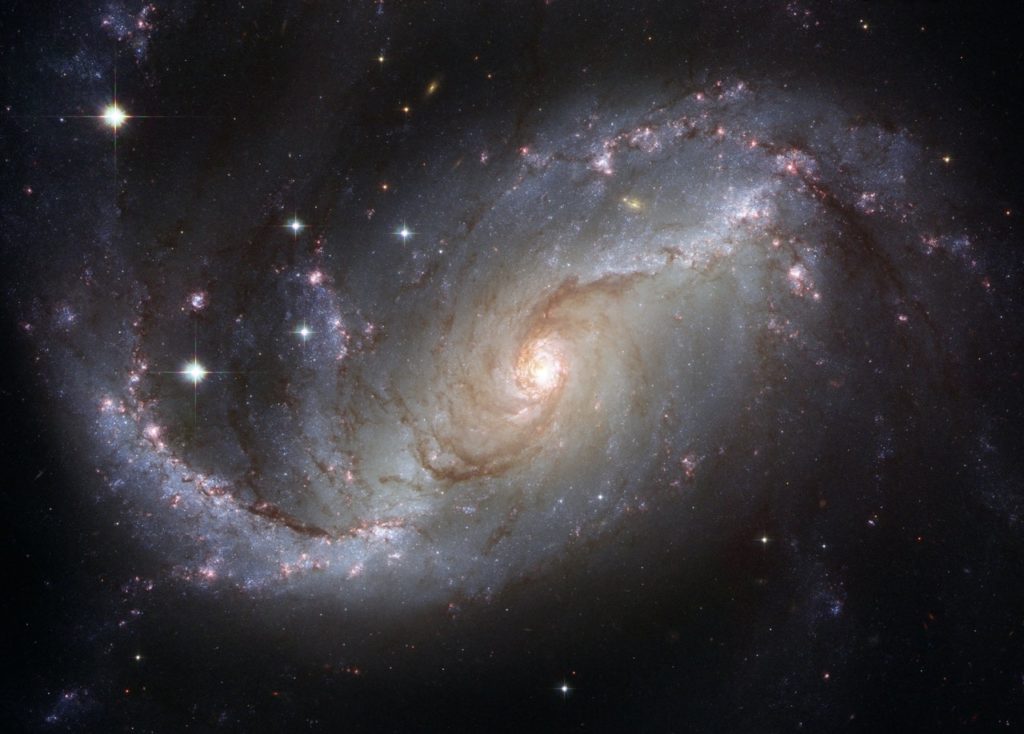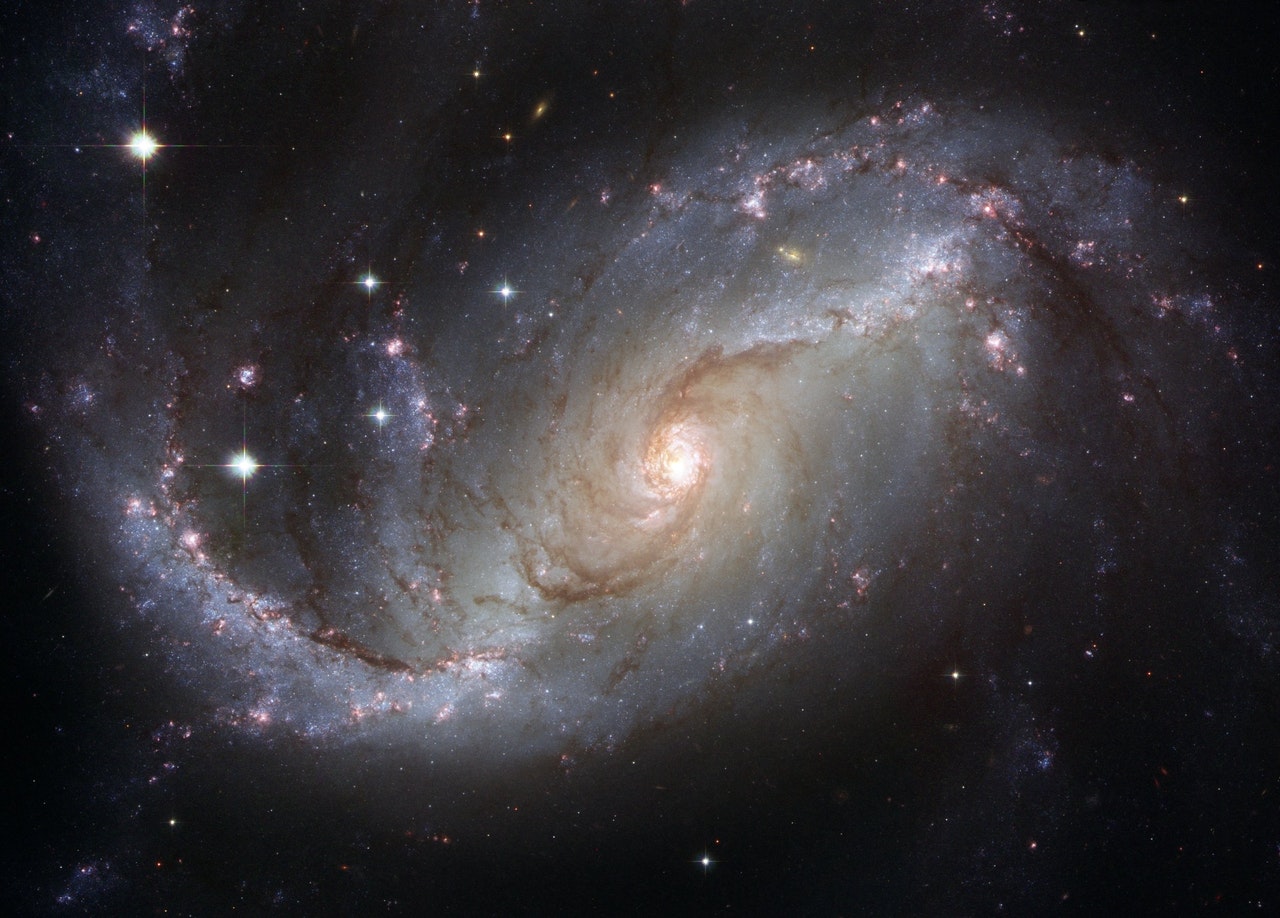
I learned this today. The Milky Way Galaxy orbits the barycenter of the Local Group.
The barycenter is the center of mass of two bodies that orbit each other. It is the point that they orbit around. The word comes from Ancient Greek and means “heavy center”.
When two objects orbit each other, there is always a barycenter. If one of the orbiting bodies is much larger than the other, but they are close together, the barycenter will be located inside the larger body. This is the way it is with the Earth and the moon. The barycenter is located 4,671 km from the center of the Earth.
If one body is much larger than the other, but they are very far away, the barycenter will be located outside the larger body. This is the way it is with Jupiter and the sun. The sun is much larger than Jupiter, but they are extremely far apart, so the barycenter is just outside the sun.
If the two bodies have the same mass, the barycenter will be between them. This is the way it is with our Milky Way Galaxy and the Andromeda Galaxy.
Both the Milky Way Galaxy and the Andromeda Galaxy are located in the Local Group, which is a group of over 80 galaxies and is 10 million light years across. There may be more than 80 galaxies, but they are too hard to see because they are blocked out by the Milky Way itself. We can only ever view the Milky Way from within it and it gets in the way.
The two biggest galaxies in the Local Group are the Milky Way and Andromeda. They both have about 1012 solar masses and probably have a trillion stars.
The other galaxies are satellites that orbit the Milky Way and Andromeda. These clusters of galaxies form two groups opposite each other and they orbit around the barycenter which is somewhere between them. They are rotating around the center of mass between them.
Andromeda and the Milky Way will eventually collide in about 4.5 billion years. They may form one galaxy or they may just pass through each other. The distance between stars in each galaxy is so great that the chances of a collision are incredibly small.
Both galaxies have a supermassive black hole at the center of them. This is the point that they orbit around. These two supermassive black holes could combine when the two galaxies collide.
The 80 or more galaxies orbiting each other in the local group are also part of a larger group called the Virgo Supercluster. This is 110 million light years across and contains approximately 2,000 galaxies. These galaxies will also be tied together gravitationally and orbiting around the barycenter between them.
And the Virgo Supercluster is a part of a larger group called the Laniakea Supercluster, which contains about 100,000 galaxies. All of these galaxies are also tied to each other gravitationally.
The galaxies in the Laniakea Supercluster appear to orbit around a point that has been called the Great Attractor. It is something that must have a mass millions of times more massive than the Milky Way to be a focal point for a supercluster. However, unfortunately, we cannot see it. It is hidden behind the Milky Way itself.
The Milky Way has an area that is called the Zone of Avoidance. If you think of pictures of the Milky Way, the long, thin, cloudy line will come to mind. This is the plane of the galaxy, and it is made up of interstellar dust and stars and this is the Zone of Avoidance. It is basically impossible to see through it because it is very difficult to differentiate stars in the Milky Way with galaxies that are behind it. The Great Attractor is right behind this point.
It is possible to detect the Great Attractor by looking at the effect it has on the motion of galaxies and the clusters that they are in.
So, large bodies that are gravitationally attached to each other, orbit around a central point that is called the barycenter. If one body is larger than the other, the barycenter will be located in the large body. If the two bodies are of equal size, the barycenter will be somewhere between them and it is the point that they will orbit around. This is the situation for the Milky Way Galaxy and the Andromeda Galaxy. And this is what I learned today.
Sources
https://en.wikipedia.org/wiki/Milky_Way
https://en.wikipedia.org/wiki/Barycenter
https://astroquizzical.com/astroquizzical/the-moon-orbits-the-earth-the-earth-orbits-the
https://en.wikipedia.org/wiki/Local_Group
https://en.wikipedia.org/wiki/Andromeda_Galaxy
https://en.wikipedia.org/wiki/Laniakea_Supercluster
https://en.wikipedia.org/wiki/Great_Attractor
https://en.wikipedia.org/wiki/Zone_of_Avoidance
https://physics.stackexchange.com/questions/129429/what-does-a-galaxy-orbit
https://www.quora.com/Does-the-Milky-Way-orbit-around-anything-If-so-whats-its-orbital-period
https://en.wikipedia.org/wiki/Andromeda%E2%80%93Milky_Way_collision

